Pantex Blog
Pantex gets new fire truck
Pantex has a new fire truck that was built customized to input provided by Pantex fire department members.
The new Administrative Support Complex requires that the Pantex Fire Department be able to reach the third floor in the event of a fire, but the current equipment would only reach to the top of a two story building. Knowing that is would be a requirement, the fire department set the gears in motion for a new fire truck with a ladder a little over a year ago.
“We really started thinking outside of the box with this truck,” said Robert Napp, Pantex Fire Captain. “Knowing we needed something that would reach the top floors at the new building, the Fire Chief wanted the most capable piece of equipment we could get that would fit in our station. We started talking about what would be useful for us during rescues — how could we get the most bang for our buck.”
The new truck was built in the United States, but the 102 foot ladder that sits atop the truck was made in Germany by a company that has been in the business of making ladders for fire trucks for more than 100 years.
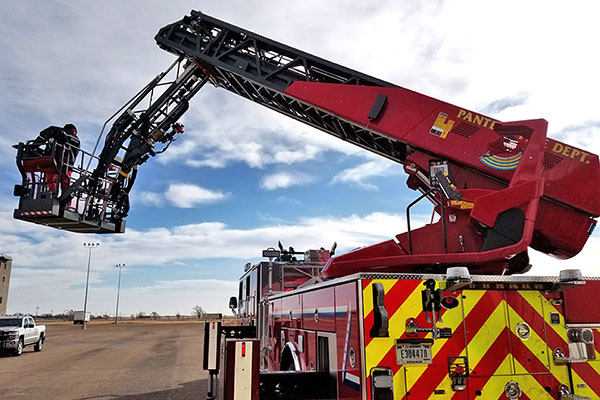
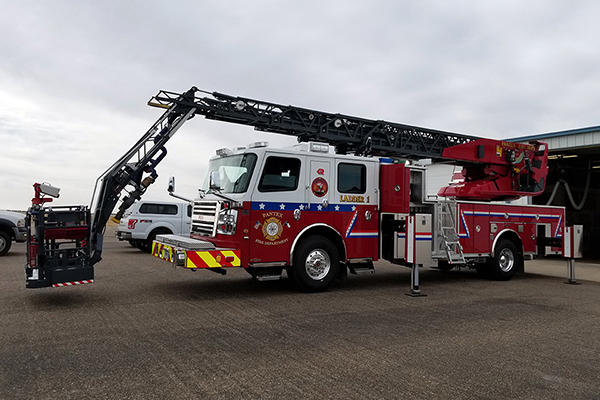
Pantex hosts inaugural Introduce a Girl to Engineering Day
Pantex recently celebrated Engineering Week 2018 by hosting the Introduce a Girl to Engineering Day conference for more than 100 area high school girls. The event, organized by the Pantex Women in Nuclear (WIN) organization, featured interactive presentation booths and plenary sessions by women leaders in STEM fields. Consolidated Nuclear Security, WIN, and Pantex Outreach and Leadership Organization (POLO) hosted the inaugural conference in partnership with the Don Harrington Discovery Center, West Texas A&M University, Texas Tech University, Asarco, Texas Alliance for Minorities in Engineering, and Bell Helicopter.
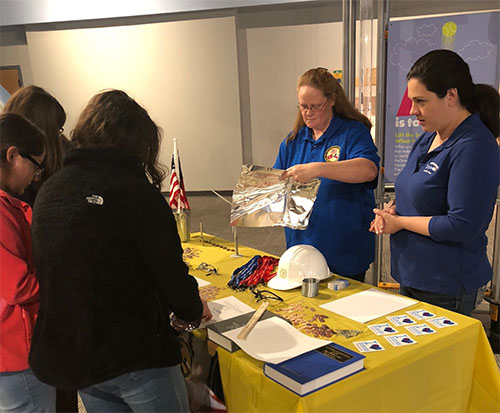
Honoring our CNS DP Awards of Excellence recipients
Two hundred and twelve Pantex and Y-12 employees were singled out by the Office of Defense Programs for setting the bar high with their work and significant contributions to sustain our nation’s defense system.
“It’s important for the Office of Defense Programs to recognize the exceptional, complex, challenging, and innovative work that employees across the enterprise carry out each day, because their contributions ensure that our stockpile — the bedrock of the nation’s security — remains safe, secure, and effective,” said Phil Calbos, acting deputy administrator for Defense Programs. “NNSA’s stockpile stewardship capability is a central part of the nuclear deterrent, and it supports national and global security.”
Recently, ceremonies were held at Pantex to honor 10 teams and at Y-12 to honor three teams of award recipients.
DP Awards of Excellence recipients have made — in any phase of the nuclear weapons life cycle process — an identifiable and significant achievement in providing increased quality; productivity; cost savings; creativity; or enhanced weapon safety, security, or use control.
“Your accomplishments are crucial to our continued success and represent Pantex and Y-12 at their best. Thank you for maintaining our can do spirit,” CNS President and Chief Executive Officer Morgan Smith said. “Our sites have made significant achievements throughout our history that we often reflect on, but your work sets the stage for our future. You’re pushing us forward daily with better ways to get the job done. Each of the 13 projects recognized by Defense Programs makes me very proud — of you, your foresight, and your dedication to our mission for the nation. Thank you.”
Pantex winning teams:
- Automated Purchase and Ship Authorization
- Enterprise Logistics Management System Enhancements
- Pit Radiography Special Request for Pantex
- W78 Tooling Improvement Startup
- Accelerated Aging of New Production PBX-9501
- High Explosive Pressing Debonding
- WETL Additional Centrifuge-Drive Replacement
- PT3854 RF PTAE Development
- Qualification Evaluation Reports Cycle Reporting Process Improvements
- Highly Efficient Reliable Operations Tool
Y-12 winning teams:
- Direct Chip Melt Process Validation
- Electronic Derivative Classifier/Reviewing Official System
- Dismantlement Acceleration
These awards celebrate achievements across the entire Nuclear Security Enterprise and are presented in special ceremonies throughout the year at the laboratories, sites, and headquarters. During 2017, the 2016 special awards were distributed to 2,300 members across the Nuclear Security Enterprise.
The DP Awards of Excellence were established in 1982 to recognize significant individual and team accomplishments across the nuclear weapons complex in support of NNSA’s nuclear weapons program. The awards recognize significant achievements in quality, productivity, cost savings, safety, or creativity supporting NNSA’s nuclear weapons modernization program. Federal employees and contractors are eligible to win awards. An executive review panel, with equal representation from each office, selects the winners annually.
Congratulations to all 212 Pantex and Y-12 award winners!
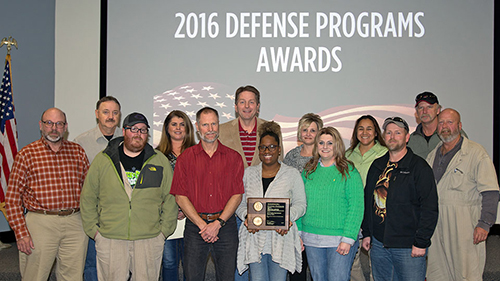
The W78 Tooling Improvement Startup team of 26 met an aggressive schedule for new tooling to be implemented ahead of schedule and with a cost savings.
Pantex surpasses 5 million hours without Lost Time injury
Pantex recently reached a major milestone when they passed 5 million hours without a Lost Time injury. From December 20, 2016 to December 2, 2017, Pantexans worked 5,979,716 hours without a Lost Time injury.
Jimmy Rogers, Pantex Safety and Industrial Hygiene manager, said in November2017 Pantex received two recognitions from the National Safety Council. The first was the Million Work Hours Award - noting the more than 5 million hours worked without a Lost Time injury and the second, the Occupational Excellence Achievement Award – awarded to companies that have Lost Time injury cases equal to or less than 50 percent of their industry classification code.
“I am very proud of Pantex,” said Rogers. “This is evidence that we are heading in the right direction. With keeping safety as our first imperative and our dedication to each other, we can continue to improve and strive for our goal of an injury-free workplace.”
Occupational Safety and Health Administration and the Department of Energy records worker injuries in four categories, from the least serious to most serious:
- First aid: an injury such as minor cuts, sprains, or strains
- Recordable: an injury that require medical treatment such as prescriptions, stitches, or physical therapy
- Restricted Work: an injury that impacts regular work duties
- Lost Time: an injury that requires the employee be off work at least one shift
The last time Pantex achieved this many hours was in 2012, when the site went 14 months and more than 8 million hours without a Lost Time injury.
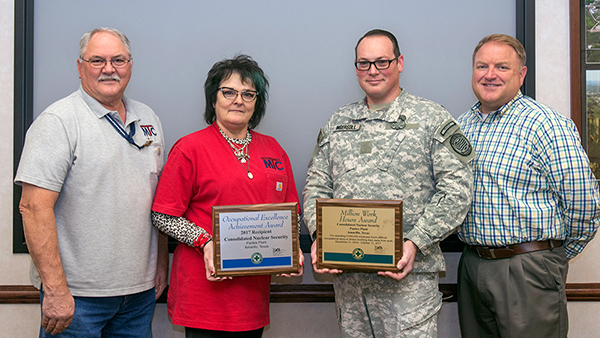
From left: Monte McAnear, Robin Harris, Anthony Ingersoll, and Corey Strickland showcase Pantex’s two recent safety recognitions.
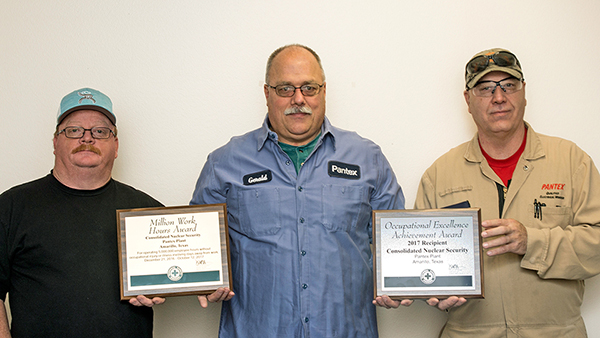
Congratulations to Pantex on this significant accomplishment; shown are Jackie Mercer (left), Gerald Johnston, and Donny Perry.
Pantex Emergency Management joins NISC
Pantex Emergency Management was recently granted membership in the National Information Sharing Consortium, an independent consortium of civic, federal, and private leaders in public safety, emergency preparedness and response, and information sharing technologies.
NISC was launched in 2012 to improve the state of public safety and emergency management information sharing and interoperability. The organization achieves this goal by sharing, connecting, innovating, and leading. With its NISC membership, Pantex Emergency Management has new access to tools, templates, and lessons learned that will provide value to the site’s emergency response operations.
